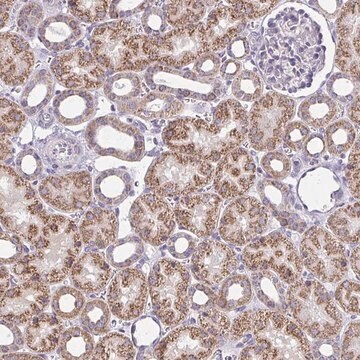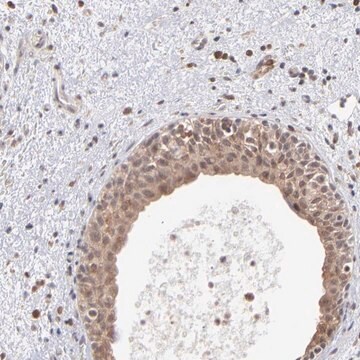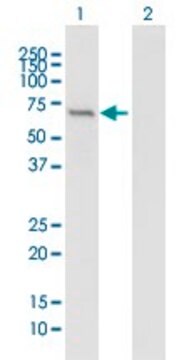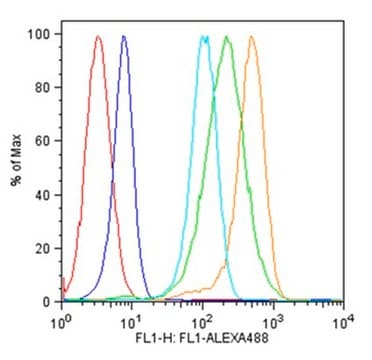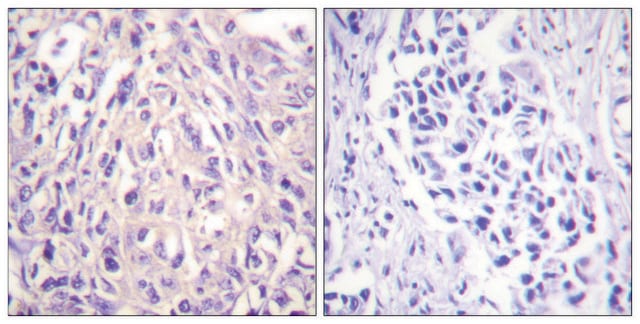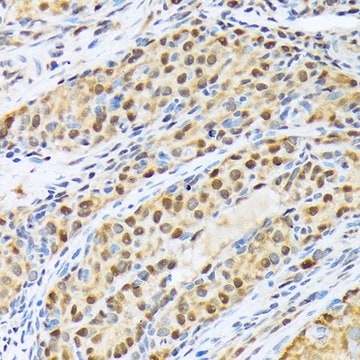ABF117
Anti-IFIT1/p56 Antibody
serum, from rabbit
Synonym(s):
Interferon-induced protein with tetratricopeptide repeats 1, IFIT-1, Glucocorticoid-attenuated response gene 16 protein, GARG-16, Interferon-induced 56 kDa protein, IFI-56K, P56
About This Item
Recommended Products
biological source
rabbit
Quality Level
antibody form
serum
antibody product type
primary antibodies
clone
polyclonal
species reactivity
human, mouse
technique(s)
flow cytometry: suitable
immunocytochemistry: suitable
western blot: suitable
NCBI accession no.
UniProt accession no.
shipped in
wet ice
target post-translational modification
unmodified
Gene Information
human ... IFIT1(3434)
General description
Immunogen
Application
Inflammation & Immunology
Inflammation & Autoimmune Mechanisms
Western Blotting Analysis: A representative lot from an independent laboratory detected IFIT-1/p56 in HT1080 cell lysates transfected with mouse p56 vector and not in HT1080 cell lysates transfected with empty vector (Terenzi, F., et al. (2007). J Virol. 81(16):8656-8665.).
Western Blotting Analysis: A representative lot from an independent laboratory detected IFIT-1/p56 in IFN-Beta treated wild type Stat1 MEF cell lysates and not in IFN-beta treated Stat1 knockdown MEF cell lsyates (Fensterl, V., et al. (2008). J Virol. 82(22):11045-11053.).
Western Blotting Analysis: A representative lot from an independent laboratory detected IFIT-1/p56 in IFN-Beta treated wild type p56 MEF cell lysates and not in IFN-Beta treated p56 knockdown MEF cell lysates (Fensterl, V., et al. (2012). PLoS Pathog. 8(5):e1002712.).
Immunocytochemistry Analysis: A representative lot from an independent laboratory detected IFIT-1/p56 in IFN-Beta treated MEF cell lysates (Terenzi, F., et al. (2007). J Virol. 81(16):8656-8665.).
Flow Cytometry Analysis: A representative lot from an independent laboratory detected IFIT-1/p56 in bone marrow cells and splenocyotes upon injection with dsRNA, IFN-alpha, and VSV (Terenzi, F., et al. (2007). J Virol. 81(16):8656-8665.).
Flow Cytometry Analysis: A representative lot from an independent laboratory detected IFIT-1/p56 in IFN-Beta treated CD3+ mature T cells, and in IFN-Beta treated myeloid Dendritic cells, but not in IFN-Beta treated plasmacytoid Dendritic cells (Fensterl, V., et al. (2008). J Virol. 82(22):11045-11053.).
Quality
Western Blotting Analysis: A 1:1,000 dilution of this antibody detected IFIT1/p56 in 10 µg of mouse ovary tissue lysate.
Target description
Physical form
Storage and Stability
Handling Recommendations: Upon receipt and prior to removing the cap, centrifuge the vial and gently mix the solution. Aliquot into microcentrifuge tubes and store at -20°C. Avoid repeated freeze/thaw cycles, which may damage IgG and affect product performance.
Disclaimer
Not finding the right product?
Try our Product Selector Tool.
Storage Class Code
10 - Combustible liquids
WGK
WGK 1
Certificates of Analysis (COA)
Search for Certificates of Analysis (COA) by entering the products Lot/Batch Number. Lot and Batch Numbers can be found on a product’s label following the words ‘Lot’ or ‘Batch’.
Already Own This Product?
Find documentation for the products that you have recently purchased in the Document Library.
Our team of scientists has experience in all areas of research including Life Science, Material Science, Chemical Synthesis, Chromatography, Analytical and many others.
Contact Technical Service